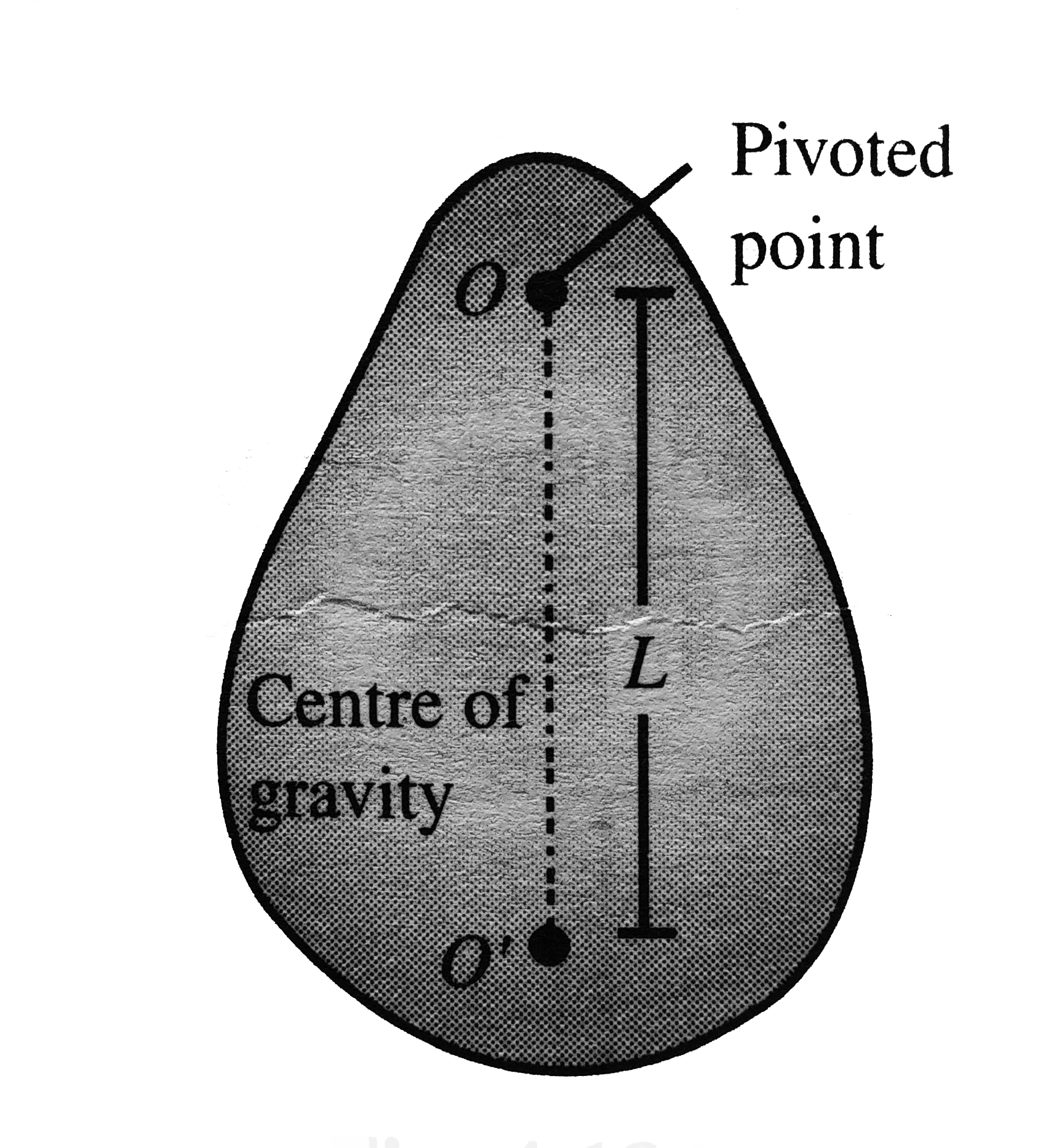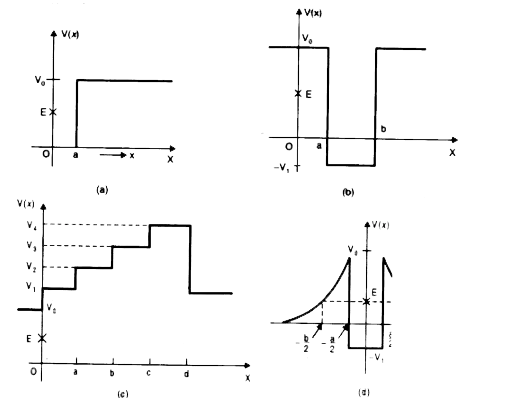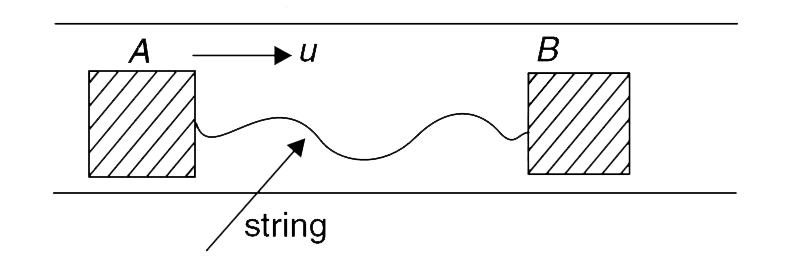Given below are some examples of motion. State in each case. If the motion is one, two or three dimensions : (i) A flying bird in the sky(ii) A footballkicked by a playes (iii) Earth revolving around the sum (iv) The motion of the bob of a simple pendulum.
(i) A flying bird in the sky is a three dimensional motion. (ii) A football kicked by a player is a two dimensional motion. (ii) Earth revolving around the sum is a two dimensional motion. (iv) The motion of the bob of simpke pendulum is one dimensional motion. Some of the characteristics of uniform motion are as follows :
(i) In uniform motion, the veocity of object neither depends on the chice of origin nor on the choice of time interval.
(iii) In uniform motion along a straight line, the magnitude of displacemnt of object in a given time is equal to the distance travelled.
(iv) In nuiform motion. no force is required to maintain the motion.
Topper's Solved these Questions
- BOOK - PRADEEPCHAPTER - KINEMATICSEXERCISE - 2 Short answer26videos
KINEMATICS
- BOOK - PRADEEPCHAPTER - KINEMATICSEXERCISE - 3 Short answer37videos
KINEMATICS
- BOOK - PRADEEPCHAPTER - KINEMATICSEXERCISE - 6 Very short4videos
KINEMATICS
- BOOK - PRADEEPCHAPTER - GRAVIATIONEXERCISE - Assertion-Reason Type Questions19videos
GRAVIATION
- BOOK - PRADEEPCHAPTER - LAWS OF MOTIONEXERCISE - Assertion- Reason Type Questions17videos
LAWS OF MOTION
Similar Questions
What do you mean by motion in one, two and three dimension ? Give examples of each type.
View SolutionGiven below are some eamples of wave motion. State in each case, if the wave motino is transverse, longitudinal or a combination of both?
(i) Motion of a kink in a long coil spring produced by displacing one end of spring side ways.
(ii) Waves produed in a cylinder containing a liquid by moving its piston back and forth.
(iii) Waves produed by a motor boat sailing in water.
(iv) Light waves travelling from sun to earth.
(v) ultrasonic waves in air produced by a vibrating quartz crystal.View Solution
Knowledge Check
- Question 1 - Select One
Which of the following is correct regarding the liquid state?
(i) A liquid can exist only between the boiling and melting point of a substance .
(ii) Liquids diffuse slowly through other liquids.
(iii) liquids consist of disordered clusters of particles that are quite close together, particles have random motion in three dimensions.
(iv) A liquid resembles a gas near the critical temperature and resembles a solid near the melting point of the substance.A(i),(ii),(iii)B(i),(ii),(iii),(iv)C(i),(iii),(iv)D(ii),(iii) - Question 2 - Select One

In physical pendulum, the time period for small oscillation is given by T=2π√IMgd where I is the moment of inertial of the body about an axis passing through a pivoted point O and perpendicular to the plane of oscillation and d is the separation point between centre of gravity and the pivoted point. In the physical pendulum a speacial point exists where if we concentrate the entire mass of body, the resulting simple pendulum (w.r.t. pivot point O) will have the same time period as that of physical pendulum This point is termed centre of oscillation.
T=2π√IMgd=2π√Lg Moreover, this point possesses two other important remarkable properties:
Property I: Time period of physical pendulum about the centre of oscillation (if it would be pivoted) is same as in the original case.
Property II: If an impulse is applied at the centre of oscillatioin in the plane of oscillation, the effect of this impulse at pivoted point is zero. Because of this property, this point is also known as the centre of percussion. From the given information answer the following question:
Q. A uniform rod of mass M and length L is pivoted about point O as shown in Figgt It is slightly rotated from its mean position so that it performs angular simple harmonic motion. For this physical pendulum, determine the time period oscillation.A2π√LgBπ√7L3gC2π√2l3gDnone of these - Question 3 - Select One
What is common among the following changes?
(i) Blinking of traffic light
(ii) Motion of fan blades while rotating
(iii) Swinging of a pendulum
(iv) Striking of a clock every one hourAThey are all chemical changes.BThey are all natural and periodic changes.CThey are all man-made and periodic changes.DThey are all undesirable periodic changes.
State in the following cases, whether the motion is one, two or three dimensional motion is one, two or three dimesional motion: (a) a dite fluing onwindy day (b) a speeding car on a long straight high way (c ) a carrom coin rebounding from the side if the board (d) a plane revolving around its star.
View SolutionWhich one of the following is a periodic motion but not oscillatory ?
(i) Motion of pendulum of a wall clock.
(ii) Oscillation of a mass suspended from a spring.
(iii) Motion of a planet around the sun.
(iv) Vibrations of the wire of a guitar.View SolutionGiven in fig are examples of some potential energy functions in one dimension. The total enrgy of the particle is indicated by a cross on the ordinate axis. In each case, specify the regions, if any, in which the particle cannot be found for the given energy. Also, indicate the minimum total energy the particle must have in each case. Think of simple physical contexts for which these potential energy shapes are relevant.
 View Solution
View SolutionThere is a long narrow and smooth groove in a horizontal table. Two identical blocks A and B each of mass m are placed inside the groove at some separation. An ideal spring is fixed to A as shown. Block A is given a velocity u to the right and it interacts with B through the spring.

(a) What will be final state of motion of the two blocks ?
(b) During their course of interaction what is the minimum kinetic energy of the system ?
(c) The spring is removed and the two blocks are tied using a mass less string. Now A is set into motion with speed u. What will be the final state of motion of the two blocks in this case ? How much kinetic energy is lost by the system ? Where goes this energy ?
 View Solution
View SolutionTha particle is executing SHM. The amplitude of motion is a. State those positions of the particle in terms of a when (i) the K.E. of the particle is zero (ii) P.E. is zero (iii) P.E. is one-fourth of the total energy (iv) P.E and K.E. are equal.
View Solution

